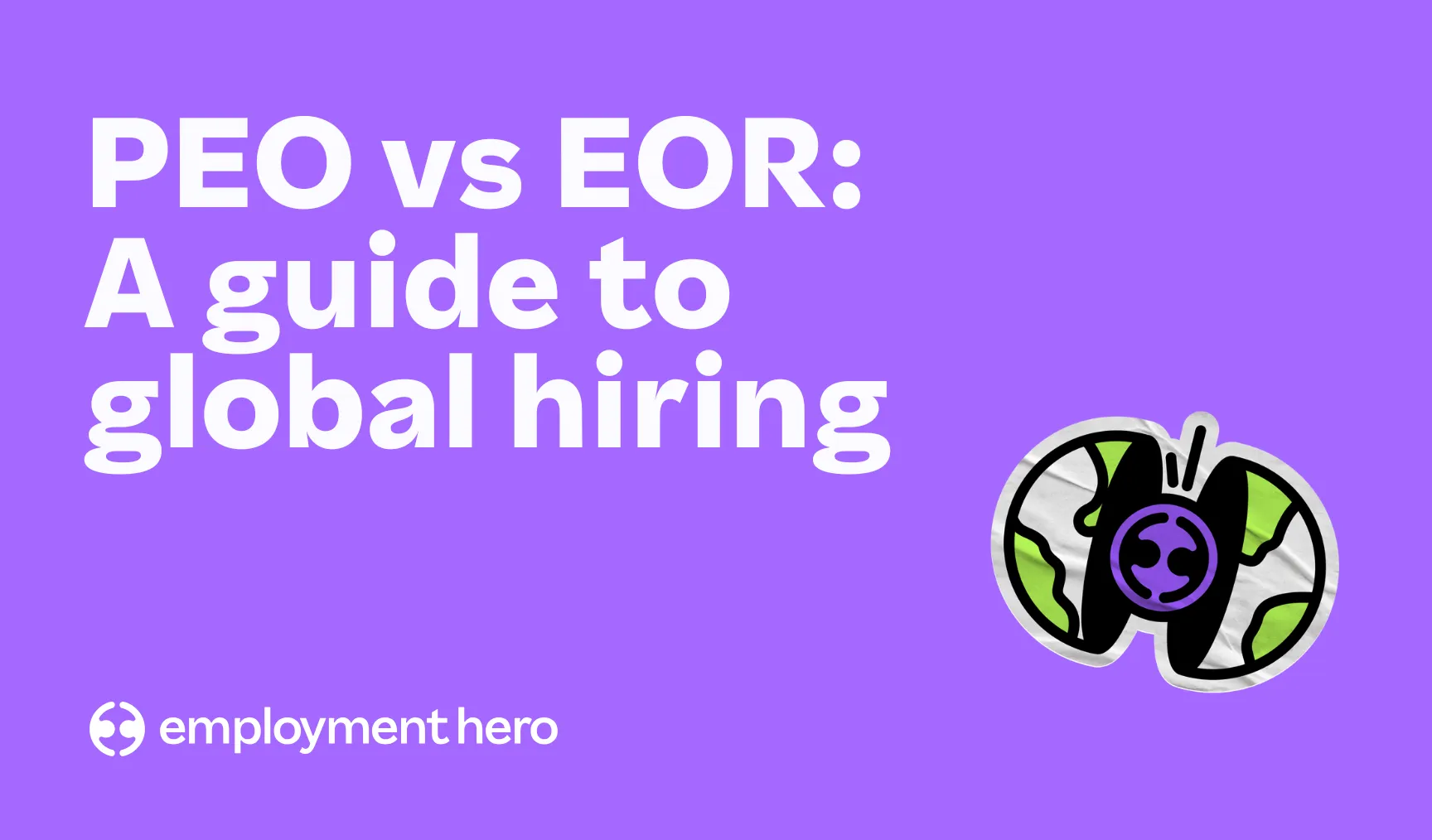Employee Code of Conduct: What is it and why is it important?
Clearly defining and enforcing Employee Code of Conduct is essential to keep your business compliant. Here is an overview of what it entails.

Clearly defining and enforcing employee code of conduct is essential to keep your business compliant. Here is an overview of what it entails. Employee misconduct is one of the most complex areas that employers and Human Resources must navigate. The purpose of a workplace code of conduct is to remove any confusion about how to handle misconduct in the work environment. This is done by establishing standards of appropriate behaviour and consequences for breaches. An employee code of conduct policy also provides legal protections in the case of unfair dismissal claims and is the foundation of a positive workplace culture.
What is an employee code of conduct?
An employee code of conduct is an important document that clearly sets out expectations for employee behaviour and ensures that everyone knows what is acceptable and what is not. A code of conduct provides guiding principles for employees and often refers to other company policies in place. “Often a code of conduct can encompass a whole lot of other policies around bullying and sexual harassment…under the title of Code of Conduct,” says Alex Hattingh, Chief People Officer at Employment Hero. “It nicely summarises what is expected of employees.”
How do you write an employee code of conduct?
A code of conduct for employees must tick a range of boxes. It must comply with relevant legislation. The code of conduct should be written in concise, easy-to-understand language and stored in locations that are easily accessible to all company employees. If you have employment management software like Employment Hero in place, these company policies will be stored in the cloud and can be accessed by employees at any time. Just like any workplace policy, an employee code of conduct policy should be communicated to all staff. Employees should then sign off on the code of conduct after receiving comprehensive training in its contents. This website offers a useful overview of what a code of conduct for employees should include:
- Ethical principles reflecting the organisation’s commitment to ethics, integrity, and quality that underpin workplace behaviour;
- The company values; Guides on professionalism, communication and team work.
- Accountability (taking responsibility for your own actions, ensuring the appropriate use of information, exercising diligence and duty of care obligations and avoiding conflicts of interest);
- Standard of conduct (complying with the job description, commitment to the organisation, and appropriate use of digital devices, internet and email);
- Standard of practice (current policies and operational procedures); and
- Disciplinary actions including complaints handling and specific penalties for any violation of the code.
The code of conduct should reflect the workplace culture, company core values, and address the relevant risk areas for the organisation as well as provide guidelines on reporting procedures for unethical conduct. Consider including conduct examples of what constitutes appropriate and inappropriate behaviour to clarify issues that are ambiguous or prone to risk. The code of conduct should be regularly reviewed and updated to ensure it complies with relevant legislation and best practice.
Employee code of conduct in action
An employee code of conduct should be enforced with consistency and fairness. In the case of a breach of the code, the severity of disciplinary action should match the misconduct. To avoid unfair dismissal claims, extra training, formal and informal warnings can be offered before an employer resorts to termination of employment on the grounds of misconduct. Read more: Establishing a work-related social events policy
A code of conduct example:
When followed correctly, an employee workplace code of conduct can help remove ambiguity around what constitutes misconduct and what doesn’t. A former train worker lost his job after he sent a lewd unsolicited photograph to his colleague’s phone. When the worker appealed his employer’s decision to terminate his employment, the Fair Work Act found that his behaviour “overstepped the boundaries of acceptable conduct” and, as a result, his dismissal was justified. Understanding emotional intelligence in the workplace can also contribute to a positive work environment. Discover the importance of emotional intelligence and its impact on your business here. Read more: New Sexual Harassment Law – What Employers Need to Know
The Importance of Employee Code of Conduct
As you can see from the example above, an employee code of conduct is a crucial part of setting expectations around the behaviour in the workplace and can be an important legal document in the event of misconduct. Employee code of conduct is critical when creating a positive workplace culture as it promotes values such as respect, integrity and accountability and encourages employees to uphold these values contributing to overall employee morale and satisfaction. Lastly, it creates a level of trust between employees and employers and is a key tool for employee retention. But it’s important to note that the code of conduct must be clear, reasonable and consistently enforced to be effective. Otherwise, the ambiguity in the code of conduct can lead to costly and time-consuming disputes down the track. To help remove this ambiguity around misconduct and mitigate risk, be sure to download our Essential Guide to HR Compliance.
Simplify Employee Code of Conduct with Employment Hero
Employment Hero is an all-in-one platform that allows organisations to create, manage and communicate in-house HR policies effectively. Not only does it provide employees with easy access to the code of conduct at any time but it allows businesses to tailor the document to their specific needs. This centralised communication streamlines the process of managing employee code of conduct and makes it easier for both employees and employers. Book a demo to see how Employment Hero can enhance your workplace standards and build a positive and respectful workplace.
Related Resources
-
 Read more: Setting employee expectations: Your guide to getting it right
Read more: Setting employee expectations: Your guide to getting it rightSetting employee expectations: Your guide to getting it right
Learn how to set clear employee expectations to boost productivity and engagement. Discover actionable tips and strategies for leadership success.
-
 Read more: PEO vs. EOR: A guide to global hiring
Read more: PEO vs. EOR: A guide to global hiringPEO vs. EOR: A guide to global hiring
Contents Expanding your business into new markets is a powerful growth strategy. But hiring talent globally introduces a maze of…
-
 Read more: How to build a global team without a local entity
Read more: How to build a global team without a local entityHow to build a global team without a local entity
Learn how to streamline your hiring and expand your UK business globally with an Employer of Record (EOR) without the…





















